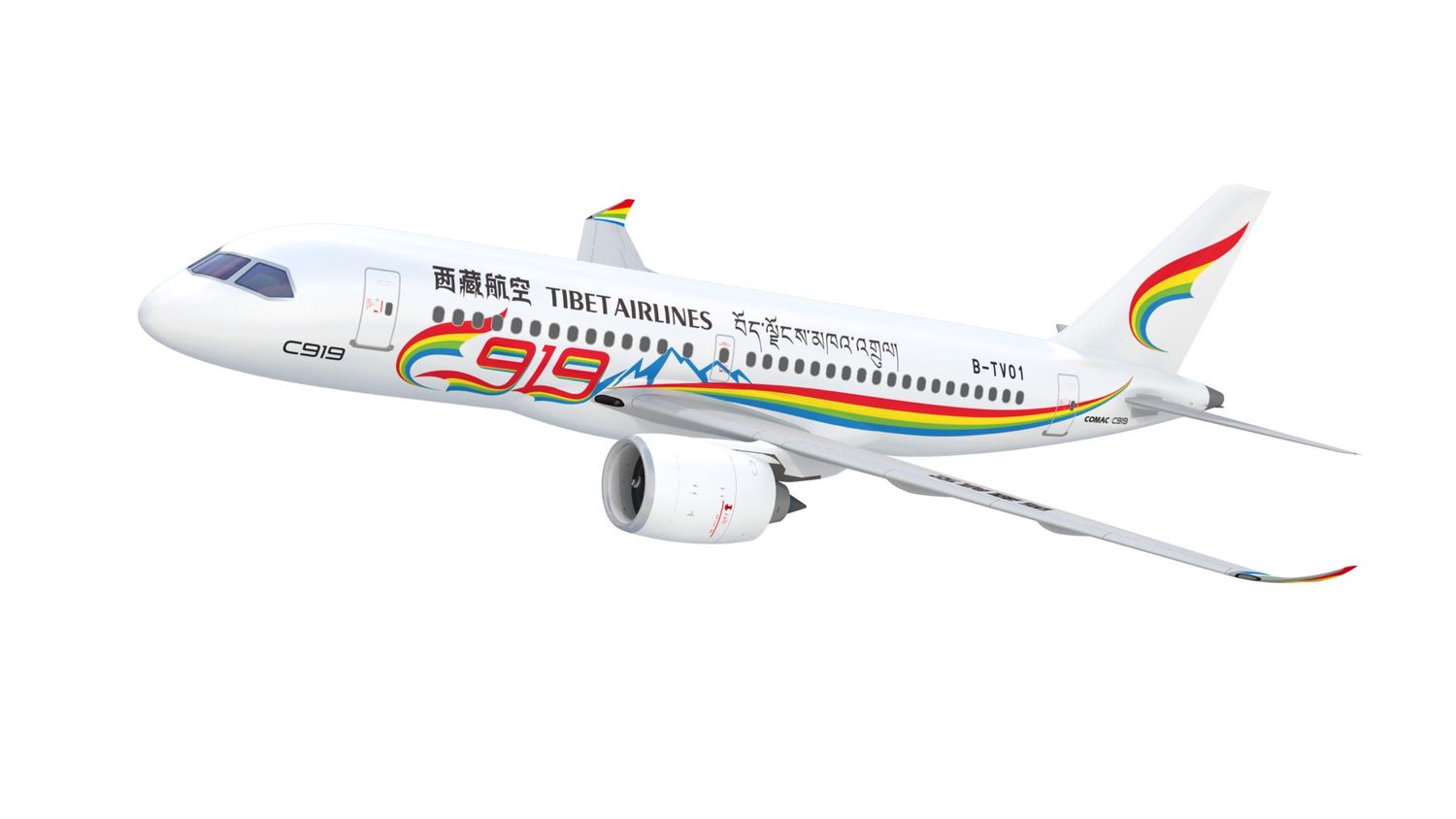COMAC C919 Secures Major Order from Tibet Airlines at Singapore Airshow
Commercial Aircraft Corporation of China (COMAC) and Tibet Airlines announced today, on the first day of the Singapore Airshow, the signing of an order for 40 C919 aircraft and 10 ARJ21s.
This agreement comes two months after both companies sealed a strategic cooperation agreement to develop a version of the C919 adapted for high-altitude airports.
Before this collaboration, COMAC had announced plans to create two distinct models derived from the C919 series. The model in question, named C919 Plateau, aims to address the unique challenges posed by Hot & High airports.
The project involves reducing the size of the C919, currently 38.9 meters in length and with a wingspan of 35.8 meters, and improving the engine, currently powered by CFM International’s LEAP.
The goal of the C919 Plateau is to rival the A319neo, a model that Airbus promotes as an ideal option for operations at Hot & High airports and those involving complex approaches on short runways.
Under that assumption, the “short” C919 could accommodate between 138 (in two classes) and 153 (in a single high-density class) passengers, while an A319neo can carry between 110 and 160 seats, depending on the configuration chosen by the operator.
The Singapore Airshow marks the international market debut of the COMAC C919, which until now has been quite reluctant to order commercial aircraft developed by the Chinese industry.
See also: COMAC raises the price of the C919 and now it’s more expensive than a Boeing 737
All of the more than 1,000 C919s that COMAC claims to have on order are for Chinese airlines. Last year, GallopAir of Brunei signed a letter of intent for 30 aircraft, which, if finalized, would be the first firm foreign order for the C919, a model that seeks to challenge the Boeing 737 and Airbus A320 families and that made its debut in May 2023.
Tibet Airlines and an almost «natural» choice
Tibet Airlines, the leading airline of its namesake province, specializes in operating at airports located at high altitudes in the Himalayan mountains. Its main base is in Lhasa (LXA), the capital of Tibet, which is situated at 3,570 meters above sea level.
Additionally, it provides services to six other airports that are located more than 2,500 meters above sea level, including Qamdo (BPX), the second highest airport in the world, at an altitude of 4,311 meters.
The high altitude of these airports significantly affects the thrust of the engines and the lift capacity of the aircraft, extending takeoff and landing times.
To adapt to standard-sized runways under high altitude and humidity (H&H) conditions, or short runways at sea level, aircraft manufacturers have developed performance improvement solutions, such as the Short Field Performance (SFP) package for the Boeing 737-800 and the Short Airfield Package (SHARP) for the Airbus A320neo.
These adaptations have made the modified models more attractive. Boeing offers the 737-700 and the 737 MAX 7, while Airbus provides the A319ceo and the A319neo, all suitable for operation under high-altitude conditions.
In this area, the Airbus A319neo has become especially popular among Chinese airlines. Tibet Airlines has six of these aircraft and is awaiting the arrival of one more, in addition to operating a fleet of 27 Airbus A319ceo.


Comentarios
Para comentar, debés estar registrado
Por favor, iniciá sesión